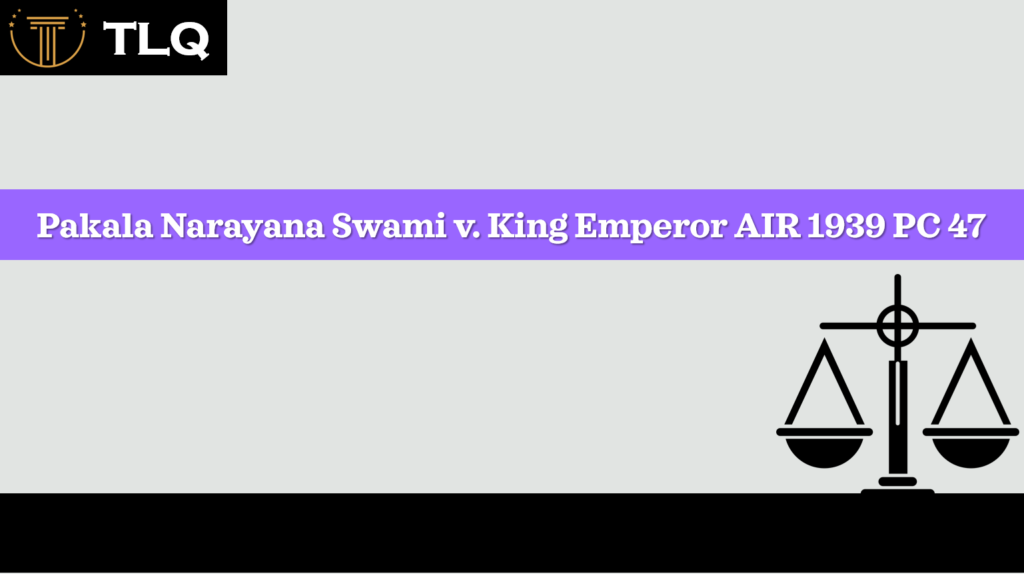Published On: 3rd November, 2024
Authored by: Mushq Khan
Hamdard Institute of Legal Studies and Research, Jamia Hamdard
An Analysis of the Competition Commission Decision on Bharti Airtel Ltd. vs. Reliance Industries Ltd. & Anr
INTRODUCTION
The Competition Act of 2002 was enacted with the goal of establishing the Competition Commission of India (CCI) to oversee and curb practices harmful to competition, promote a competitive marketplace, protect consumer interests, and ensure the freedom of trade in India. This Act finds its foundation in Article 38 of the Indian Constitution, which calls on the state to work towards the welfare of its people by securing a social order rooted in justice—social, economic, and political—and orienting state policies to achieve this aim.[1] Additionally, the Preamble to the Indian Constitution enshrines the principle of economic justice, underscoring the government’s commitment to establishing a fair economic order.[2] Therefore, the Competition Act was designed to support a marketplace free from restrictive trade practices, fostering an environment where new businesses can thrive in the Indian economy.
The Act’s central purpose is to monitor and mitigate trade practices with a significant negative impact, particularly through Section 4, which addresses the abuse of a “dominant position.” Section 4’s Explanation (a) defines “dominant position” as the standing of an enterprise in the relevant Indian market that enables it to operate without regard to competitors or to influence the market or its competitors in a way that serves its own interests.[3]
An enterprise with dominant market control may disregard competitive pressures, impose unilateral trading terms, or set prices at its discretion, which constitutes “abuse of dominance.” This abuse involves anti-competitive strategies, including the suppression or elimination of competitors to sustain or elevate the enterprise’s market dominance[4]. Under Section 19(4), the CCI must assess certain factors when evaluating an enterprise’s dominance. These factors include market share, economic power, consumer dependence on the enterprise, barriers to market entry, and the overall market structure.[5]
Section 4(2) of the Act further enumerates specific actions that qualify as abuse of dominant position. These include:
- Imposing unfair or discriminatory conditions or prices in the sale or purchase of goods or services, including “predatory pricing,” which is defined as the intentional pricing below production costs to weaken or eliminate market competition.
- Limiting the production or availability of goods and services in the market.
- Constraining technical or scientific progress in ways that harm consumers.
- Engaging in practices that deny other businesses access to the market.
- Conditioning contracts on supplementary obligations unrelated to the contract’s primary subject.
- Leveraging dominance in one market to fortify or expand control in another.
The Indian telecom sector—among the largest globally, with a subscriber base of 1.16 billion and over 743 million internet users—exemplifies a highly competitive market.[6]The entry of Reliance Jio and the merger of Vodafone and Idea have intensified this competition, prompting telecom companies to innovate continually and maintain a competitive edge in the market.[7]
ESTABLISHMENT OF RELIANCE JIO
Reliance Jio began as Infotel Broadband Services Private Limited (IBSL) when Reliance Industries Limited (RIL) acquired a 96% stake in Infotel during the June 2010 Broadband Wireless Auction (BWA) in India. In January 2013, IBSL was rebranded as Reliance Jio Infocomm Limited (RJIL) as the company geared up to enter the telecom sector, aiming to establish a dominant presence, similar to RIL’s influence in other industries.[8] In September 2016, Reliance Jio officially launched its wireless telecom and internet services, capturing consumer attention with unique promotional offers that included free, unlimited services.
At launch, Reliance Jio attracted users with various enticing introductory offers, including free voice calls and competitively priced data plans—significantly cheaper than those offered by other telecom providers. By July 2017, at its 40th Annual General Meeting, Reliance Jio introduced its first paid plan, already boasting 108 million users and gaining recognition as the world’s fastest-growing telecom network. Today, largely due to Reliance Jio’s competitive strategies, India has one of the world’s lowest mobile data rates, with Jio becoming the nation’s largest telecom provider, serving approximately 388 million subscribers.[9]
However, this rapid growth and aggressive pricing also impacted Jio’s competitors, leading to substantial losses for some while pushing others out of the market entirely.[10] Although the Constitution of India supports the principles of freedom of trade and economic justice, this freedom is not unlimited, especially if it comes at the cost of fair competition. Claiming to be disadvantaged by Jio’s extended free services, Bharti Airtel filed a complaint with the Competition Commission of India (CCI), accusing Reliance Jio of engaging in abusive practices, including predatory pricing and anti-competitive agreements between RIL and its subsidiary.
ANALYSIS OF THE COMPETITION COMMISSION OF INDIA DECISION
Bharti Airtel’s primary contentions in its complaint are as follows:
- Reliance Industries allegedly leveraged its financial strength to penetrate the telecom sector through its subsidiary Reliance Jio, which Airtel argues constitutes an abuse of dominant position under section 4(2)(e) of the Competition Act, 2002.
- Additionally, Bharti Airtel contends that Reliance Jio’s provision of free services constitutes predatory pricing, in violation of section 4(2)(a)(ii) of the Competition Act, 2002.
The Competition Commission of India (CCI) interpreted the term “relevant market” narrowly within this context, determining that the relevant market pertained to “wireless telecom services” in India and assessed Reliance Jio’s dominance based solely on its individual market share.[11] According to section 2(s) of the Competition Act, “relevant geographic market” refers to an area where the conditions for supply and demand of goods or services are homogenous and can be distinguished from surrounding regions.[12]
In MCX Stock Exchange v. National Stock Exchange of India Ltd.[13], the CCI established that a claim of predatory pricing must meet a two-pronged test:
– There must be a demonstrable likelihood of the scheme driving competitors out of the market.
– Evidence must indicate that the dominant firm could later raise prices sufficiently to recover costs without attracting new market entrants.
Reliance Jio entered the telecom market by offering free telecom and internet services, which substantially grew its subscriber base, extending its reach across both urban and rural areas. The company sustained the costs of providing these free services for six months while paying an interconnection charge of 14 paise per minute for calls made by its subscribers to other networks, and yet emerged as India’s largest wireless telecom and internet service provider within just three years. In April 2017, Reliance Jio introduced its first paid plan to offset the initial costs of these free services, by which point it had garnered approximately 112 million subscribers.
Regarding Bharti Airtel’s allegation of predatory pricing, the CCI found this contention unsubstantiated. Airtel argued that Jio’s free services were enabled through the leverage of Reliance Industries’ dominant position. However, the CCI noted that Airtel failed to demonstrate how the free services arose from unilateral conduct by Reliance Industries or an anti-competitive agreement between Reliance Industries and Reliance Jio. The CCI concluded that “providing free services cannot by itself raise competition concerns unless the same is offered by a dominant enterprise and is shown to be tainted with an anti-competitive objective of excluding competition or competitors, which does not seem to be the case of Jio”.[14]
Similarly, in Fast Track Call Cab Pvt. Ltd. v. ANI Technologies Pvt. Ltd.[15], the claimants alleged that the respondent used its dominant position to provide excessive discounts in the relevant market. The CCI clarified that a company’s technological advantage or unique business model does not inherently render it dominant within the relevant market, thus dismissing the categorization of dominance based solely on a novel business approach.
REMEDIES
Upon completion of an inquiry into abuse of dominance, if the Competition Commission of India (CCI) concludes that a dominant enterprise has engaged in such practices within a relevant market, it may issue any of the orders stipulated under Section 27 of the Competition Act.[16] These possible orders include:
– Instructing the enterprise to cease the abusive conduct;
– Imposing a penalty, not exceeding 10% of the enterprise’s average turnover for the preceding three financial years;
– Directing the enterprise to take specific corrective actions deemed appropriate by the CCI;
– Issuing any other directive that the Commission considers necessary;
– Requiring the enterprise to undergo structural separation;
– If an appeal is made to the Competition Appellate Tribunal, the Tribunal may also mandate compensation for the aggrieved party.[17]
CONCLUSION
The Competition Act makes it clear that holding a dominant position is not inherently unlawful; however, no enterprise is permitted to misuse this dominance. Thus, the law prohibits not the dominance itself but the abuse of it. With increasing cases of abuse of dominant position, the enforcement of statutory provisions under the Competition Act has become essential. The purpose of this law is to uphold business autonomy and to promote an untainted economic environment, free from the intimidation posed by dominant players in the market. Therefore, equal opportunities should be afforded to all businesses, ensuring fair competition that benefits society as a whole. Healthy competition fosters societal growth, but it becomes detrimental when one business overpowers others unfairly. Accordingly, Section 4 of the Competition Act serves as a key provision aimed at prohibiting the abuse of dominant position. The onus, therefore, is on the Competition Commission of India to establish the existence of dominance and any abuse thereof.
References:
[1] Constitution of India, Art 38.
[2] Preamble to the Constitution of India.
[3] Competition Act 2002, s 4(a).
[4] Ibid
[5] Competition Act 2002, s 19(4).
[6] Department of Telecommunications, Government of India, Annual Report 2021-22.
[7] Reliance Industries Limited, ‘Reliance Jio Annual Report 2021-22’
[8] ‘Reliance Jio’s Journey’ (Reliance Annual Report, 2011).
[9] Telecom Regulatory Authority of India, ‘Subscriber Report 2021’.
[10] Bharti Airtel Limited v Reliance Jio Infocomm Limited (2017) Competition Appeal (AT) No 51.
[11] Competition Commission of India, Reliance Jio Infocomm Case Report (2016).
[12] Competition Act 2002, s 2(s).
[13] MCX Stock Exchange v National Stock Exchange of India Ltd.* 2011 SCC OnLine CCI 52.
[14] Competition Commission of India, Bharti Airtel Case Report (2017).
[15] Fast Track Call Cab Pvt. Ltd. v ANI Technologies Pvt. Ltd. 6 & 74 of 2015.
[16] Competition Act 2002, s 27.
[17] Competition Act 2002, s 53N(1).




